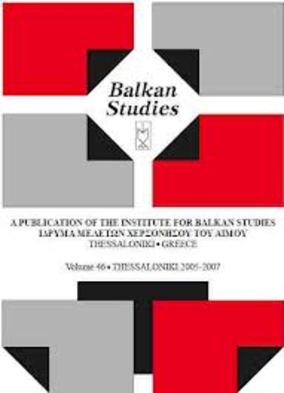Le passé des territoires : Kosovo-Metohija (XVIIIe-XXe siècle): Les guerres du XVIIIe siècle: sous le signe de l’intolérance religieuse
Part of : Balkan studies : biannual publication of the Institute for Balkan Studies ; Vol.38, No.2, 1997, pages 253-283
Issue:
Pages:
253-283
Parallel Title:
The past of the territories : Kosovo and Metohija (18th-20th century)
Section Title:
Articles
Author:
Abstract:
Serbian-Albanian rivalry was the result of austro-turkish wars in the 17thand 18th century. The Albanians as Muslim were settled in Kosovo-Metohijaafter the Great Migrations of the Serbs in 1690. The rivalry was twofold:religious (Islamicized Albanians vs. Orthodox Serbs) and social (Albanians ascattle-breeders vs. Serbs as peasant serfs). In the age of nationalism theirrivalry became part of the Ottoman state policy who used Albanians to suppressthe Christian national movements. Under sultan Abdulhamid II, founderof Pan-Islamism, this rivalry was marked by systematic discrimination andpersecution against the Orthodox Serbs encouraged by local authorities. UnderAustro-Hungarian influence, Albanians, considered as a bridge which will takeDual Monarchy further into Balkans, towards Salonika bay, the persecutiontook wide proportions. The serbo-albanian rivalry in the context of serboaustrianconfrontations entered the new phase, after Kosovo in 1912 becamepart of Serbia, while Metohija was incorporated into Montenegro. In the commonYugoslav state after 1918, Kosovo-Metohija became area where the promotionof Albanian aspiration was inherited by Italy as a new regional power,which eventually annexed it to “Greater Albania” in 1941. In communistYugoslavia, Kosovo-Metohija was used by Tito to balance the numeric preponderanceof the Serbs as bearers of royalist traditions and as fervent anticommunistforces. The autonomy for the region was gradually enlarged andthe local power eventually transferred to ethnic Albanians in 1968, who tookopportunity for historical revenge against the local Serbs, who were discriminatedin order to move into inner Serbia. It was the first and silent “ethniccleansing” in the communist Yugoslavia. The demands of ethnic Albanians in1981 for a separate republic derived from the logic of titoist order, producingthe ethnic mobilization among the Serbs. Albanian homogenization was thefirst step towards the disintegration of titoist order, provoking domino-reactionwhich led directly to the civil war.
Subject:
Subject (LC):
Keywords:
Kosovo and Metohija (18th-20th century)




